Introduction
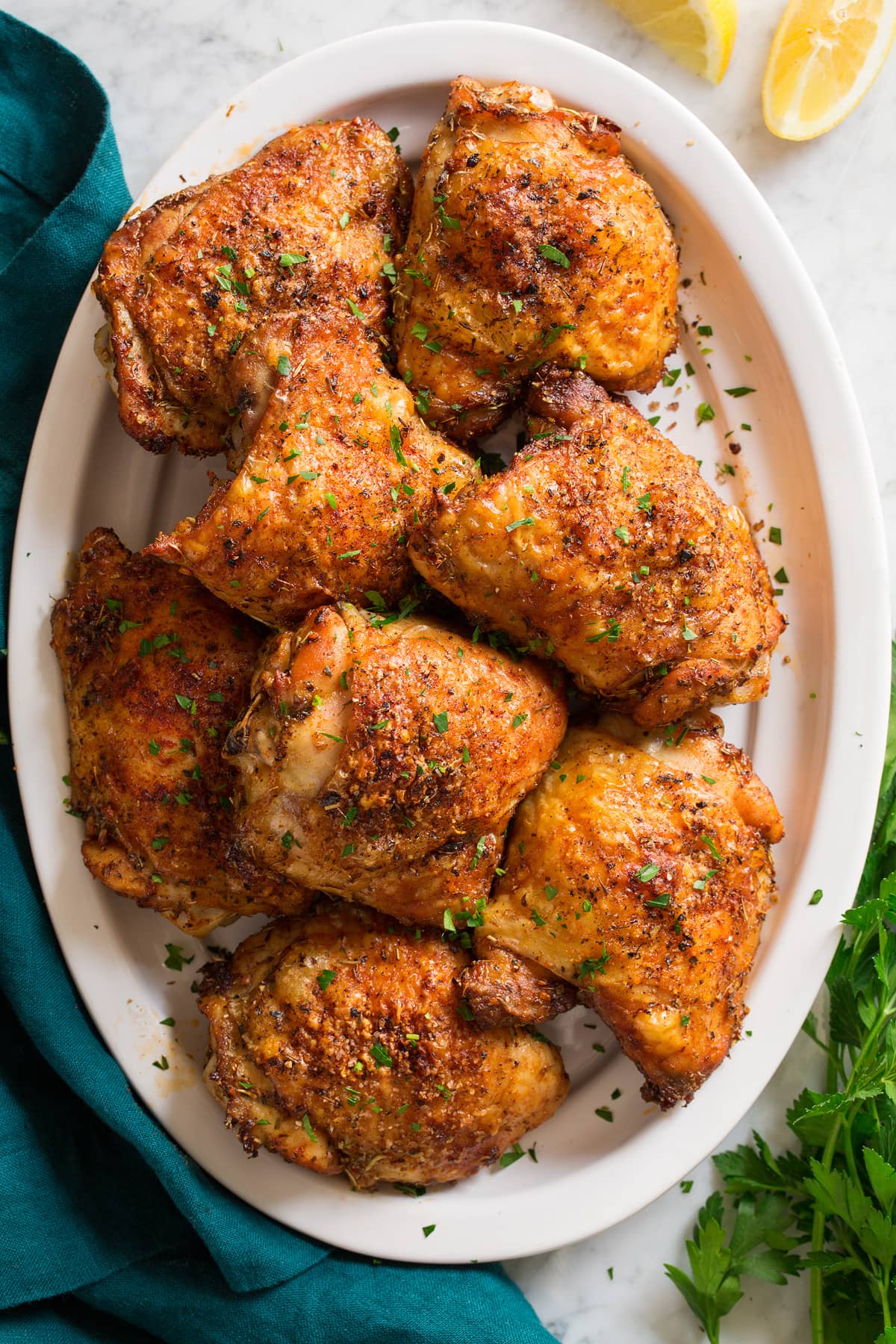
Boiling chicken thighs is a simple and versatile cooking method that yields tender and flavorful meat. Whether you’re looking to create a quick and easy weeknight meal or add protein to your favorite salad or soup, boiled chicken thighs are a great option. By following the step-by-step guide in this article, you’ll learn the proper techniques for boiling chicken thighs to perfection. From choosing the right chicken thighs to seasoning and flavoring, this comprehensive guide will ensure your boiled chicken thighs are a delicious and satisfying addition to any recipe.
A Brief Overview Of Boiling Chicken Thighs And Its Benefits
Boiling chicken thighs is a simple and straightforward cooking method that yields tender and flavorful meat. It is a popular cooking technique because it is easy, convenient, and versatile. Boiling chicken thighs ensures that the meat reaches a safe internal temperature, making it a healthier cooking option. Additionally, boiling allows the chicken to retain its natural flavors and juices. Whether you’re looking to create a quick weeknight meal or add protein to your favorite recipe, boiling chicken thighs is a great choice.
Safety Precautions To Consider When Handling Poultry
When handling poultry, it is important to follow safety precautions to prevent the spread of bacteria and ensure food safety. Here are some key tips to keep in mind:
- Properly store chicken in the refrigerator or freezer to maintain its freshness and prevent bacterial growth.
- When preparing chicken, use separate cutting boards and utensils to avoid cross-contamination with other foods.
- Wash hands thoroughly with soap and water before and after handling raw chicken.
- Cook chicken to the recommended internal temperature to kill any harmful bacteria.
- Clean and sanitize all surfaces and utensils that come into contact with raw chicken.
By following these precautions, you can minimize the risk of foodborne illnesses associated with handling poultry.
Preparing The Chicken Thighs

To prepare the chicken thighs, start by cleaning them and removing any excess fat or skin if desired. This step helps to create a healthier and leaner dish.
Next, pat the chicken thighs dry with paper towels to remove any excess moisture. This will ensure that the chicken cooks evenly and achieves a golden crispy skin.
By properly preparing the chicken thighs, you will enhance their flavor and create a delicious and satisfying meal.
Choosing The Right Chicken Thighs
When it comes to boiling chicken thighs, choosing the right ones is essential for the best results. Opt for bone-in, skin-on chicken thighs as they tend to be more flavorful and moist compared to boneless and skinless varieties. Look for thighs that are uniform in size and have a healthy pinkish color. Avoid any thighs that have a strong odor or show signs of discoloration. Selecting high-quality chicken thighs ensures that your boiled dish will turn out tender and delicious.
Trimming Excess Fat From The Chicken Thighs
To prepare the chicken thighs for boiling, it is important to trim excess fat. Excess fat can contribute to a greasy texture and unwanted flavor. Start by removing any obvious flaps of fat using a sharp knife or kitchen shears. Next, explore the chicken thighs for hidden fat pockets and trim them away. Use a scissor skimming technique for thin layers of fat. By trimming the fat, you will ensure a leaner and healthier dish.
Seasoning And Flavoring
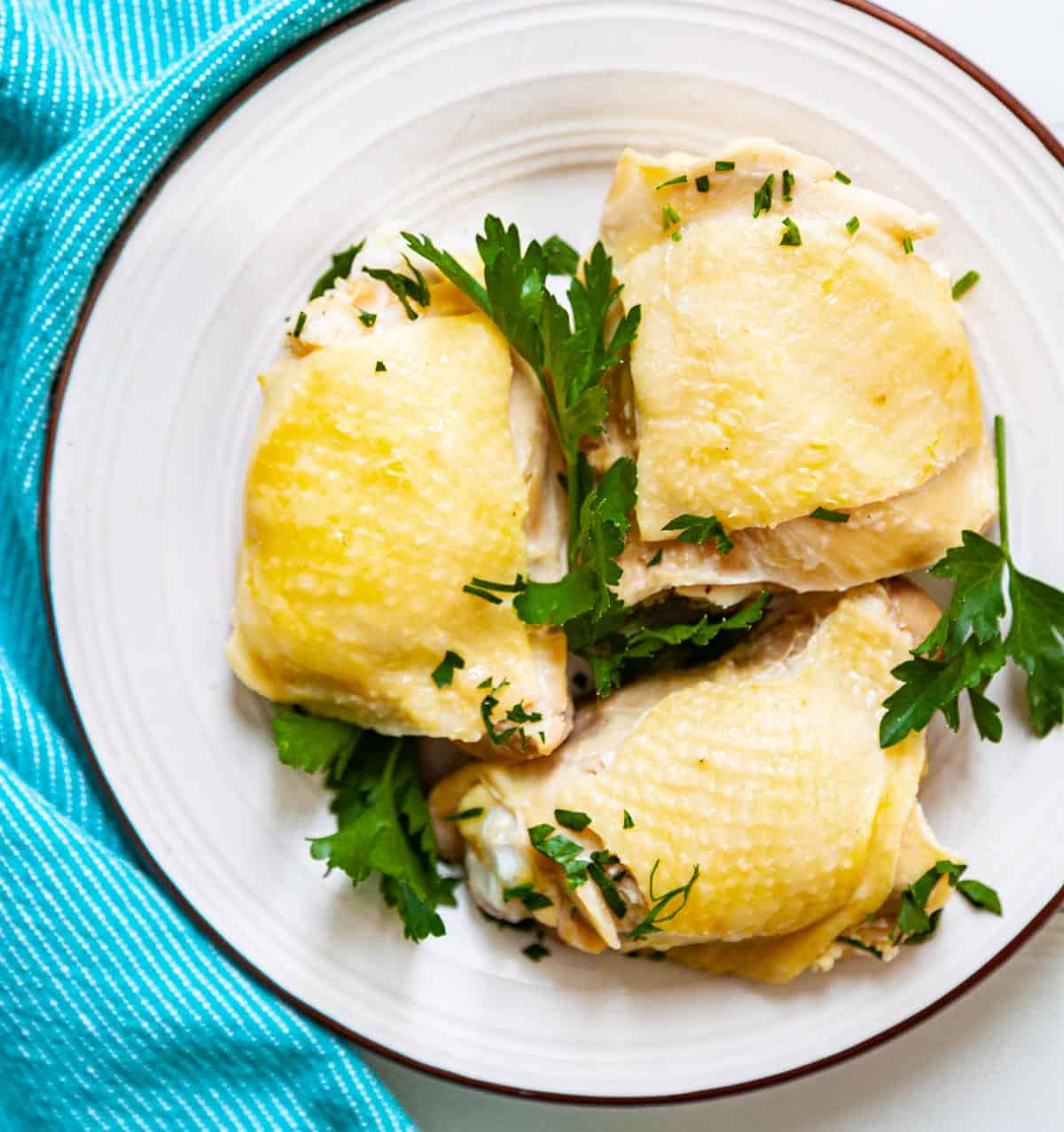
To enhance the taste of your boiled chicken thighs, seasoning and flavoring are essential steps. Consider marinating the chicken thighs before boiling to infuse them with additional flavors. You can use a variety of spices and herbs, such as paprika, garlic powder, oregano, or rosemary, to add depth and complexity to the dish. Additionally, season the water with ingredients like onions, garlic, bay leaves, or peppercorns to impart aromatic flavors into the chicken thighs as they cook. These extra steps will elevate the taste of your boiled chicken thighs and make them even more delicious.
Marinating The Chicken Thighs For Enhanced Taste
Marinating the chicken thighs before boiling can greatly enhance their taste. By allowing the chicken to sit in a flavorful mixture, the marinade penetrates the meat, infusing it with delicious flavors. Whether using a store-bought marinade or making your own, incorporating ingredients like soy sauce, lemon juice, and herbs can add depth and complexity to the chicken. It is recommended to marinate the chicken thighs for at least 30 minutes to allow the flavors to develop. This simple step will elevate the taste of the boiled chicken thighs, making them even more delicious.
Spices And Herbs To Enhance The Flavor
To enhance the flavor of boiled chicken thighs, incorporating a variety of spices and herbs can make a significant difference. Consider using herbs like thyme, rosemary, or parsley to add freshness and aromatic notes to the chicken. Spices such as paprika, cumin, or chili powder can add a hint of heat and depth of flavor. Experimenting with different spice blends or creating your own can help customize the taste of the chicken thighs to your liking.
Boiling The Chicken Thighs
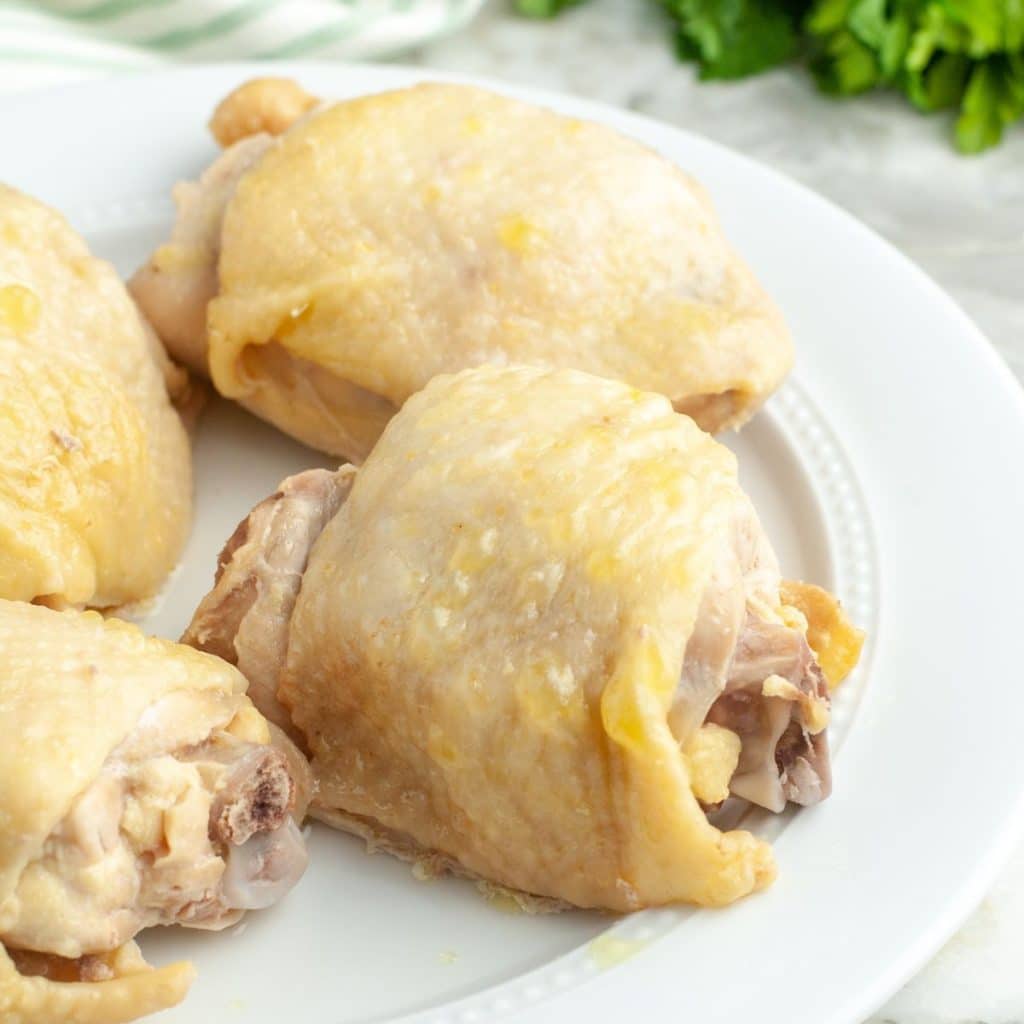
To boil chicken thighs, start by placing the chicken thighs in a large pot and covering them with enough water to fully submerge them. Bring the water to a boil over medium-high heat, then reduce the heat to low and simmer for about 25-30 minutes, or until the chicken is cooked through and reaches an internal temperature of 165°F (74°C). Use a meat thermometer to check for doneness. Once cooked, drain the chicken thighs and they are ready to be served or used in other recipes.
Boiling Chicken Thighs On The Stovetop
To boil chicken thighs on the stovetop, start by placing the chicken thighs in a large pot and covering them with enough water to fully submerge them. Bring the water to a boil over medium-high heat, then reduce the heat to low and simmer for about 25-30 minutes, or until the chicken is cooked through and reaches an internal temperature of 165°F (74°C). Use a meat thermometer to check for doneness. Once cooked, drain the chicken thighs and they are ready to be served or used in other recipes.
Using A Slow Cooker Or Pressure Cooker For Boiling
Using a slow cooker or pressure cooker is a convenient method for boiling chicken thighs. When using a slow cooker, simply place the chicken thighs in the cooker and add enough water to cover them. Cook on low heat for 4-6 hours or on high heat for 2-3 hours until the chicken is fully cooked.
If using a pressure cooker, add the chicken thighs and water to the pot and lock the lid. Cook on high pressure for 8 minutes for boneless thighs, or 10 minutes for bone-in thighs. Allow for a natural release before serving. These cooking methods result in tender and flavorful chicken thighs.
Checking For Doneness
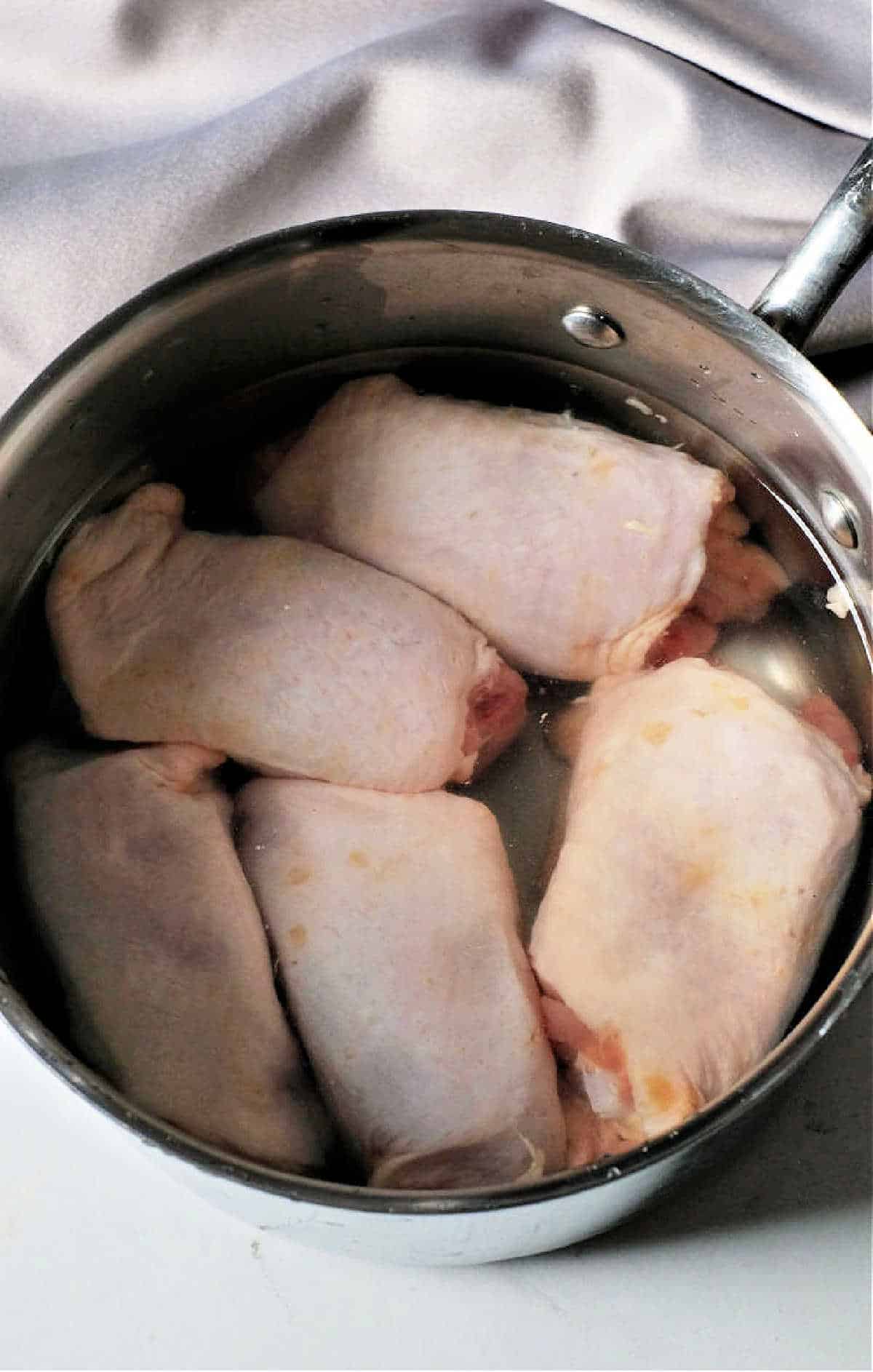
To ensure that the chicken thighs are properly cooked, it is important to check for doneness. One way to do this is by using a meat thermometer. Insert the thermometer into the thickest part of the thigh, being careful not to touch the bone. The internal temperature should reach 165°F (74°C) to ensure that the chicken is safe to eat. If you don’t have a meat thermometer, you can also check for doneness by cutting into the thickest part of the thigh and making sure the juices run clear.
Properly Cooked Chicken Thighs
Properly cooked chicken thighs are juicy, tender, and reach an internal temperature of 165°F (74°C). When boiling chicken thighs, it is important to use a meat thermometer to ensure they are cooked to perfection. Insert the thermometer into the thickest part of the thigh, avoiding contact with the bone. The meat should no longer be pink and the juices should run clear. Always prioritize food safety by ensuring thorough cooking to avoid any risk of foodborne illnesses.
Signs Of Undercooked Or Overcooked Chicken Thighs
Signs of undercooked chicken thighs include pink or raw-looking meat, slimy texture, and the juices appearing cloudy or pink. Undercooked chicken can harbor harmful bacteria and may pose a risk of foodborne illnesses. On the other hand, overcooked chicken thighs can become dry, tough, and stringy. The meat may be white throughout and lack juiciness. It is important to cook chicken thighs to the proper internal temperature of 165°F (74°C) to ensure they are safely cooked while remaining tender and flavorful.
Serving And Storage
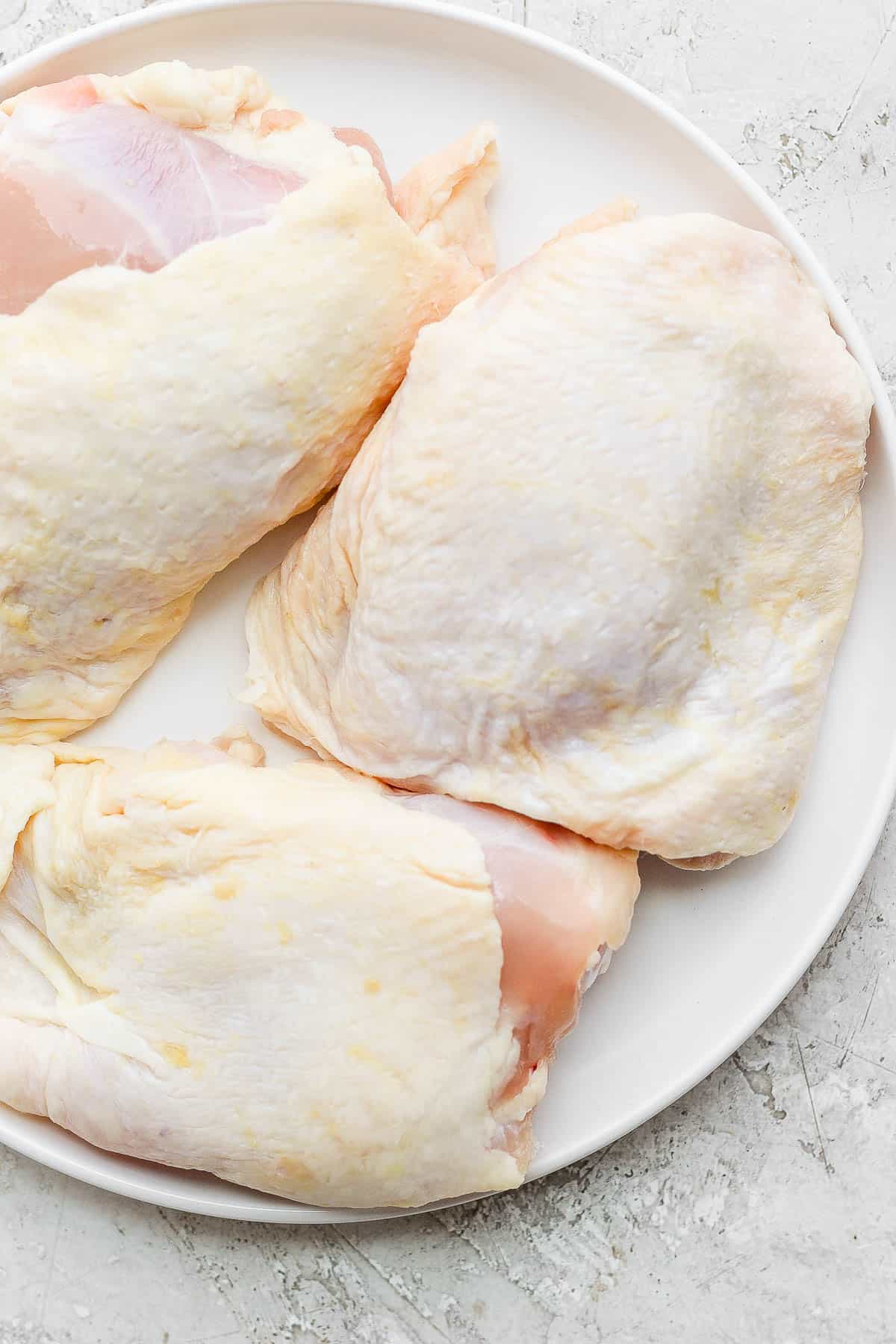
To serve boiled chicken thighs, you can enjoy them as is, slice them and add them to salads or sandwiches, or use them as a base for various recipes like soups, stews, or casseroles. The tender and flavorful meat can elevate any dish.
When it comes to storage, allow the boiled chicken thighs to cool to room temperature before refrigerating them in airtight containers or sealable plastic bags. They can be kept in the refrigerator for 3-4 days. For longer storage, freeze the chicken thighs in freezer-safe containers or bags labeled with the date.
Ideas For Serving Boiled Chicken Thighs
Boiled chicken thighs can be served in a variety of ways to suit your taste preferences. Here are some ideas to inspire your culinary creativity:
- As a standalone dish: Enjoy the tender and flavorful chicken thighs as is, paired with your favorite side dishes like mashed potatoes, steamed vegetables, or a fresh salad.
- Slice and add to salads or sandwiches: Thinly slice the chicken thighs and toss them into a refreshing salad or use them as a protein-packed filling for sandwiches or wraps.
- Use as a base for soups and stews: Shred or chop the boiled chicken thighs and add them to hearty soups, comforting stews, or flavorful chili for an added protein boost.
- Incorporate into casseroles or pasta dishes: Mix the boiled chicken thighs into creamy casseroles, pasta bakes, or cheesy pasta dishes to elevate the flavors and add a meaty texture.
Get creative and experiment with different herbs, spices, and sauces to customize the flavor profile according to your preferences and the specific dish you’re preparing. Enjoy the versatility of boiled chicken thighs in a range of delicious meals!
Proper Storage And Reheating Methods
Proper storage and reheating methods are important to ensure the safety and quality of boiled chicken thighs. After cooking, allow the chicken thighs to cool completely before storing them in an airtight container in the refrigerator. They can be stored for up to 4 days. To reheat, place the chicken thighs in a microwave-safe dish and heat them in intervals, stirring occasionally, until they are heated through. Alternatively, you can reheat the chicken thighs in a preheated oven at 350°F (175°C) for about 15-20 minutes. Always ensure the chicken thighs reach an internal temperature of 165°F (74°C) before consuming.
Conclusion
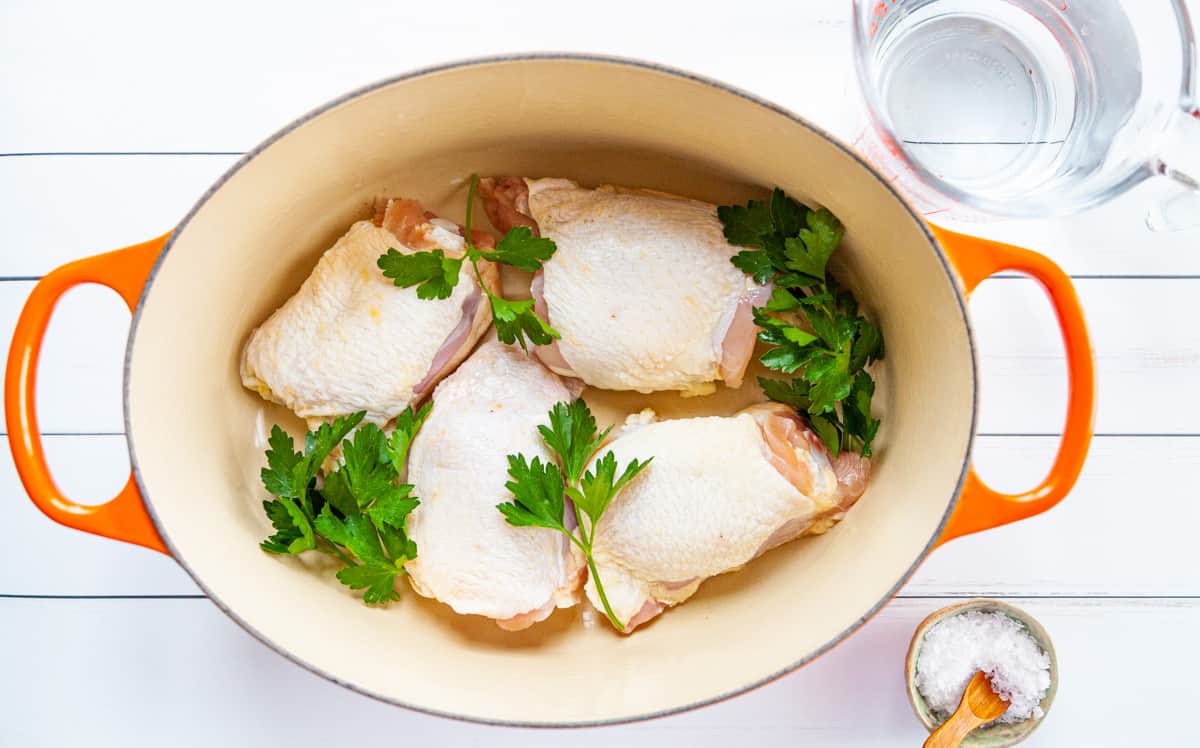
In conclusion, boiling chicken thighs is a simple and versatile cooking method that results in tender and flavorful meat. By following the steps outlined in this guide, you can master the art of boiling chicken thighs. Whether you prefer to season them with herbs and spices or marinate them for added flavor, boiling allows you to create delicious meals with ease. Remember to check for doneness and to properly store and reheat leftovers to ensure safety and quality. Enjoy the succulent and juicy chicken thighs in various dishes and experiment with different flavors to suit your taste.
Recap Of The Simple Steps To Boil Chicken Thighs
To recap, boiling chicken thighs is a straightforward process that can result in juicy and flavorful meat. Here are the simple steps to follow:
- Start by choosing the right chicken thighs and trimming excess fat.
- Season the thighs with your choice of marinade, spices, and herbs for added flavor.
- Place the seasoned thighs in a pot of boiling water or use a slow cooker or pressure cooker for convenience.
- Cook the chicken thighs until they reach the proper internal temperature of 165°F (74°C).
- Serve the boiled thighs with your favorite side dishes or incorporate them into various recipes.
Remember to handle poultry safely, check for doneness, and store leftovers properly for safety and quality. Enjoy your delicious boiled chicken thighs!
Tips For Variations In Flavors And Culinary Experimentation
When it comes to boiling chicken thighs, there are endless opportunities for culinary experimentation. Here are some tips to help you explore different flavors and styles:
- Try different marinades: Experiment with various marinades like teriyaki, lemon garlic, or BBQ for a burst of flavor.
- Add herbs and spices: Enhance the taste by adding herbs like rosemary, thyme, or spices like paprika, cumin, or chili powder.
- Customize the broth: Instead of plain water, use chicken broth or add vegetables like onion, celery, or carrots to infuse extra flavor into the chicken.
- Explore international flavors: Create unique dishes by incorporating flavors from different cuisines, such as Mexican, Italian, or Asian, using spices and ingredients specific to those regions.By getting creative with seasonings and trying different combinations, you can discover new and exciting ways to enjoy boiled chicken thighs. Let your taste buds guide you on a culinary adventure!
Frequently Asked Questions: Boiling Chicken Thighs
Q: Is boiling a good method for cooking chicken thighs?
A: Boiling chicken thighs can be a great cooking method, especially if you want to keep the meat tender and juicy.
Q: How long does it take to boil chicken thighs?
A: The cooking time depends on the size of the chicken thighs. On average, it takes about 20-25 minutes to boil boneless, skinless chicken thighs, while bone-in varieties may require 30-35 minutes.
Q: How do I prepare the chicken thighs before boiling?
A: Before boiling the chicken thighs, you may want to trim any excess fat or skin from them. Additionally, you can season them with spices, herbs, or marinade to enhance the flavor.
Q: Can I use frozen chicken thighs?
A: Yes, frozen chicken thighs can be boiled, but they will require a longer cooking time. Make sure they are fully defrosted before adding them to the boiling water.
Q: How much water should I use for boiling chicken thighs?
A: It’s best to use enough water to completely cover the chicken thighs. This will ensure even cooking and prevent sticking to the pot.
Q: Should I add any seasoning to the boiling water?
A: While not necessary, you can add salt, pepper, herbs, or spices to the water for additional flavor. However, keep in mind that some of the seasoning may wash off during boiling.
Q: Can I add vegetables to the pot while boiling chicken thighs?
A: Yes, you can definitely add vegetables like onions, carrots, celery, or garlic cloves to the pot while boiling chicken thighs. They will infuse the chicken with flavor and create a tasty broth.
Q: How do I know if the chicken thighs are fully cooked?
A: The best way to check if the chicken thighs are cooked thoroughly is by piercing the thickest part of the meat with a meat thermometer. The internal temperature should reach 165°F (74°C).
Q: What can I do with the boiled chicken thighs?
A: Boiled chicken thighs can be used in various dishes such as salads, soups, stews, tacos, sandwiches, or shredded for chicken wraps. They can be a versatile protein option for many recipes.
Q: Can I store the boiled chicken thighs in the refrigerator?
A: Absolutely! Once cooled, store the boiled chicken thighs in an airtight container in the refrigerator for up to 4 days. They can be used in leftovers or reheated for quick and easy meals.
Remember, boiling chicken thighs is a simple and convenient method to cook tender and flavorful chicken. Experiment with different seasonings and enjoy the versatile use of boiled chicken thighs in your favorite recipes!

Kemah Cafe is a family-owned eatery that takes pride in offering a delightful array of Vietnamese, Chinese, and Thai dishes. Located at the heart of the community, Kemah Cafe has been serving up delicious Pho and other authentic Asian cuisine for many years. Founded with a passion for sharing the flavors of the East, Kemah Cafe has become a beloved culinary destination for locals and visitors alike. The warm and welcoming atmosphere of the cafe, combined with the tantalizing aromas of freshly prepared dishes, creates an unforgettable dining experience.